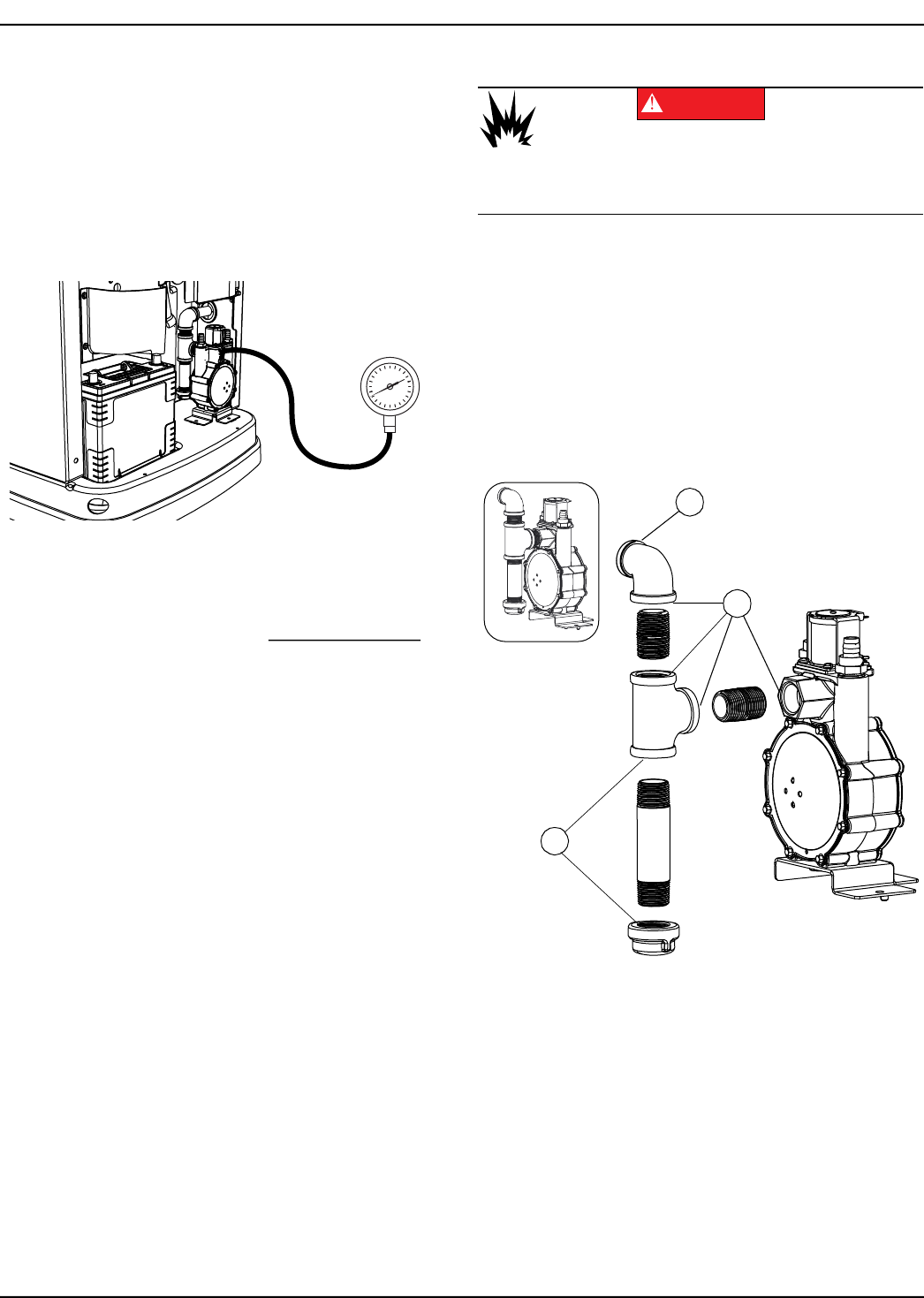Installation Guide
Table Of Contents
- Installation Guidelines 60 Hz Air-Cooled Generators
- Table of Contents
- Section 1: Safety Rules & General Information
- Section 2: Unpacking and Inspection
- Section 3: Site Selection and Preparation
- Section 4: Generator Placement
- Section 5: Fuel Conversion / Gas Connections
- Section 6: Electrical Connections
- Section 7: Control Panel Startup / Testing
- Section 8: Troubleshooting
- Section 9: Quick Reference Guide
- Section 10: Accessories
- Section 11: Diagrams

Fuel Conversion / Gas Connections
Installation Guidelines for 60 Hz Air-Cooled Generators 25
Checking Fuel Line Connections
Checking Fuel Pressure
Proceed as follows to check fuel pressure at fuel regula-
tor in the generator.
1. Close fuel supply valve.
2. See Figure 5-4. Remove top fuel pressure test port
from fuel regulator and install fuel pressure tester
(manometer).
Figure 5-4. Checking Pressure with Manometer
3. Open fuel supply valve and verify fuel pressure is
within specified values.
4. Record static fuel pressure:
NOTE: Fuel pressure can also be tested at manometer
port on fuel shutoff valve shown in Figure 5-2.
NOTE: See fuel data decal or spec sheet for correct fuel
pressure specifications. Contact local fuel supplier if fuel
pressure is not within specifications.
5. Close fuel supply valve when completed. Keep
manometer connected for future tests of generator
while starting, running, and under loads.
Performing Fuel System Leak Test
All products are factory-tested before shipping to verify
the performance and integrity of the fuel system. How-
ever, it is important to perform a final fuel system leak test
before starting the generator. The entire fuel system
should be tested from supply to regulator.
See Figure 5-5. Perform a final fuel system leak test
after generator installation. The test will identify possible
leaks at all connection points (A).
It is best practice to perform a fuel system leak test
during normally-scheduled maintenance.
Figure 5-5. Connection Points to Leak Check
Inspect for leaks by spraying all connection points with a
non-corrosive gas leak detection fluid. The solution
should not be blown away or form bubbles.
001807
(000192)
DANGER
Explosion and fire. Fuel and vapors are extremely
flammable and explosive. No leakage of fuel is
permitted. Keep fire and spark away. Failure to do
so will result in death or serious injury.
A
A
A
004038










